The Secret to Closing the Skills Gap in Industrial Aftermarket Services
In today’s rapidly evolving industrial landscape, machine builders face a growing challenge that threatens to undermine their aftermarket service operations: the widening skills gap. As experienced technicians retire and technological complexity increases, companies struggle to maintain service quality and profitability. Yet within this challenge lies an opportunity for forward-thinking organisations. The ability to effectively bridge this skills gap isn’t just a defensive measure—it’s potentially your greatest competitive advantage in the aftermarket services sector. Let’s explore how machine builders can transform this industry-wide challenge into a strategic opportunity for growth and enhanced customer relationships.
Why is the skills gap threatening aftermarket service profitability?
The industrial aftermarket service sector is experiencing a perfect storm. An aging workforce with decades of hands-on experience is retiring, taking with them invaluable tribal knowledge about machines, troubleshooting, and customer environments. Meanwhile, the complexity of modern industrial equipment continues to grow exponentially, incorporating sophisticated electronics, automation, and connectivity features.
This widening gap directly impacts your bottom line. When skilled technicians are scarce, response times lengthen, first-time fix rates decline, and customer satisfaction suffers. The financial consequences extend beyond disappointed customers—emergency callouts increase, warranty costs rise, and opportunities for service revenue growth remain untapped.
After-sales process optimization becomes nearly impossible when your team lacks the necessary skills to execute efficiently. What’s more, the competitive advantage that your specialised knowledge once provided begins to erode, opening the door for third-party service providers to capture your aftermarket business.
Building a sustainable knowledge transfer system
The solution begins with acknowledging that knowledge transfer cannot be an afterthought or happen by osmosis. It requires a structured, systematic approach that captures expertise before it walks out the door.
Start by identifying critical knowledge areas unique to your equipment and services. Which troubleshooting processes rely on experience rather than documentation? What customer-specific configurations require special handling? This mapping exercise reveals your most significant knowledge vulnerabilities.
Next, implement multiple knowledge capture channels. Digital tools like video documentation, annotated repair guides, and searchable knowledge bases should complement mentorship programmes and cross-training initiatives. The goal is to transform implicit knowledge (what your experts simply “know”) into explicit, teachable content that new technicians can access and learn.
We’ve found that the most successful knowledge transfer programmes incorporate both technical content and customer context. Understanding not just how a machine works, but how and why a specific customer uses it in their unique environment, creates technicians who can deliver truly exceptional service.
Leveraging technology to amplify existing talent
Technology can serve as a powerful force multiplier for your service team, allowing fewer experienced technicians to support more customers effectively. Remote monitoring and diagnostics capabilities, like those offered through our Fter.io platform, enable your experts to assess machine conditions without traveling to customer sites.
Augmented reality tools represent another breakthrough, allowing your most experienced technicians to virtually guide less experienced field staff through complex procedures. Rather than sending your top expert to every challenging job, they can support multiple service calls simultaneously, dramatically expanding your service capacity without additional hiring.
Data-driven predictive maintenance also helps bridge the skills gap by transforming reactive troubleshooting into planned interventions. When machines communicate impending issues before failure, even less experienced technicians can successfully perform maintenance tasks with proper guidance and preparation.
| Technology Solution | Skills Gap Impact | Implementation Complexity |
|---|---|---|
| Remote Monitoring | Reduces on-site visits; allows remote diagnosis | Medium |
| Augmented Reality Support | Extends expert reach; improves field technician capabilities | Medium-High |
| Predictive Analytics | Shifts from reactive to planned maintenance | Medium-High |
| Digital Documentation | Provides accessible knowledge at point of need | Low-Medium |
Creating new revenue streams despite talent shortages
The skills gap challenge also presents an opportunity to develop new service offerings that are less dependent on large numbers of highly skilled technicians. Remote monitoring services, for example, allow you to offer proactive maintenance packages that deliver customer value while optimising your resource allocation.
Consider developing tiered service offerings where the highest-value customers receive priority access to your most experienced technicians, while other service levels leverage technology-assisted solutions. This approach maximises the impact of your expert resources while still meeting all customers’ needs.
Training services represent another opportunity. As your customers face their own skills challenges, offering operator training and basic maintenance education can generate additional revenue streams. These services can often be delivered by mid-level technicians or through digital platforms, reducing dependency on your most experienced staff.
Measuring the ROI of skills gap investments
Investments in closing the skills gap must demonstrate tangible returns. Effective measurement begins with establishing baseline metrics for key performance indicators like first-time fix rates, response times, and service profitability.
Track both leading and lagging indicators. Certification completions and knowledge assessment scores serve as early signals of progress, while improvements in customer satisfaction scores and service efficiency demonstrate ultimate business impact.
One often overlooked metric is the knowledge retention rate—how effectively your organisation maintains critical expertise despite personnel changes. Regular assessments can identify emerging knowledge gaps before they impact service quality.
Remember that the true ROI extends beyond direct service metrics. When properly executed, your skills gap strategy should also reduce recruitment costs, decrease employee turnover, and increase customer loyalty—all contributing to sustainable aftermarket service growth.
Closing the industrial aftermarket skills gap isn’t just about maintaining service capabilities—it’s about transforming potential vulnerability into competitive advantage. By implementing structured knowledge transfer systems, leveraging technology to extend your expertise, creating innovative service offerings, and measuring results diligently, machine builders can ensure profitable aftermarket operations for years to come. After-sales process optimization becomes not just possible but a defining strength of your business, turning technical expertise into lasting customer relationships and recurring revenue streams.

